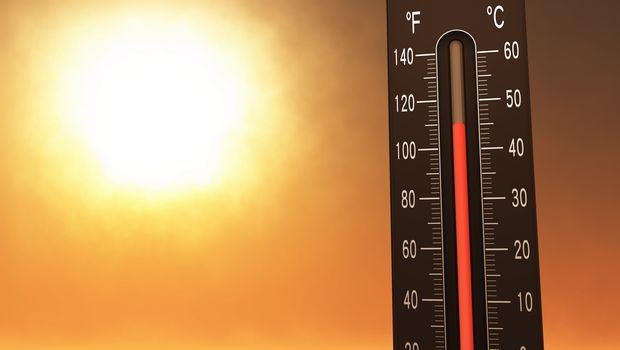Warm Weather Increases the Incidence of Serious Surgical Site Infections

Surgical site infections, a common healthcare-associated infection, are seasonal – increasing in the summer and decreasing in the winter–according to new research published online in Infection Control & Hospital Epidemiology. Temperatures above 90 degrees F were associated with 28.9 percent increased odds for hospitalization with a surgical site infection (SSI) compared to temperatures less than 40 degrees F.
“We show that seasonality of surgical site infections is strongly associated with average monthly temperature. As temperatures rise, risk increases,” said Philip M. Polgreen, MD, senior author of the study, director of the Innovation Lab at The Signal Center for Health Innovation and associate professor of internal medicine and epidemiology at the University of Iowa. “However, the odds of any one person getting an infection are still small, and due to the limitations of our data, we still do not know which particular surgeries or patients are at more risk from higher temperature.”
Researchers used data on millions of patients from the Nationwide Inpatient Sample – the largest database of discharges from hospitals in the United States – to identify every adult hospitalization with a diagnosis of SSI from January 1998 to November 2011. Each hospital’s longitude and latitude were used to identify nearby weather stations. Monthly summary statistics from each station were included in the analysis, including temperature, rainfall and wind speed. In addition to reviewing incidence of SSIs in a linear time trend to determine the role of seasonality, the study included subgroup analyses by hospitals’ region, teaching status and setting (i.e., urban vs. rural), as well as patient gender and age.
SSIs were found to be seasonal, with 26.5 percent more SSI-related hospital discharges in the peak month of August than at the low point of January. Researchers estimated that a 25 percent reduction in the average number of at-risk surgeries in the months of July and August would be associated with a decrease of nearly 1,700 SSIs each year. Seasonality and incidence were similar across all regions, age groups, genders and hospital teaching categories, but seasonality was greatest among patients in their 40s and 50s.
“These results tell us that we need to identify the patients, surgeries, and geographic regions where weather-related variables are most likely to increase patients’ risk for infections after surgery,” said Christopher A. Anthony, MD, the first author of the study and surgery resident physician at University of Iowa Roy J. and Lucille A. Carver College of Medicine. “This way, we can identify the patients at the greatest risk for surgical site infections during warmer summer months.”
SSIs can be a major cause of severe illness or death after surgery. SSIs also cause increased use of antibiotics and other antimicrobials, and are a leading cause of hospital readmissions, contributing to excess healthcare costs.
Reference: Christopher Anthony, Ryan Peterson, Linnea Polgreen, Daniel Sewell, Philip Polgreen. “The seasonal variability in surgical site infections and the association with warmer weather: a population-based investigation.” Web (May 16, 2017).
Source: Society for Healthcare Epidemiology of America
Together We Rise: Why AORN Expo 2025 Is a Must for Every Perioperative Nurse
March 31st 2025From April 5 to 8, 2025, thousands of perioperative nurses will gather in Boston for the 2025 AORN Global Surgical Conference & Expo—a transformational experience designed to elevate nursing practice, build lifelong connections, and advance surgical care.
Vet IP Roundtable 2: Infection Control and Biosecurity Challenges in Veterinary Care
March 31st 2025Veterinary IPs highlight critical gaps in cleaning protocols, training, and biosecurity, stressing the urgent need for standardized, animal-specific infection prevention practices across diverse care settings.
Invisible, Indispensable: The Vital Role of AHRQ in Infection Prevention
March 25th 2025With health care systems under strain and infection preventionists being laid off nationwide, a little-known federal agency stands as a last line of defense against preventable patient harm. Yet the Agency for Healthcare Research and Quality (AHRQ) is now facing devastating cuts—threatening decades of progress in patient safety.